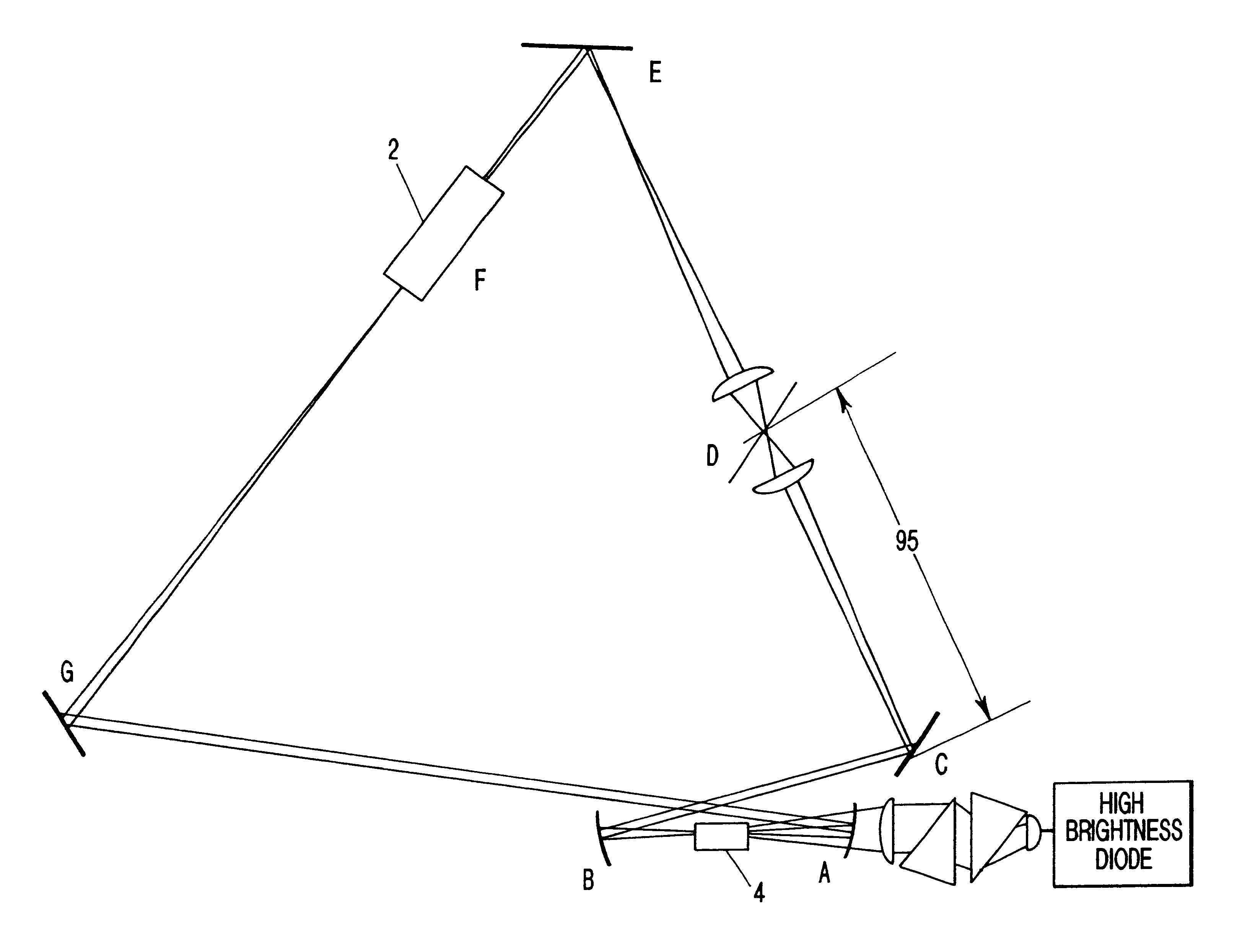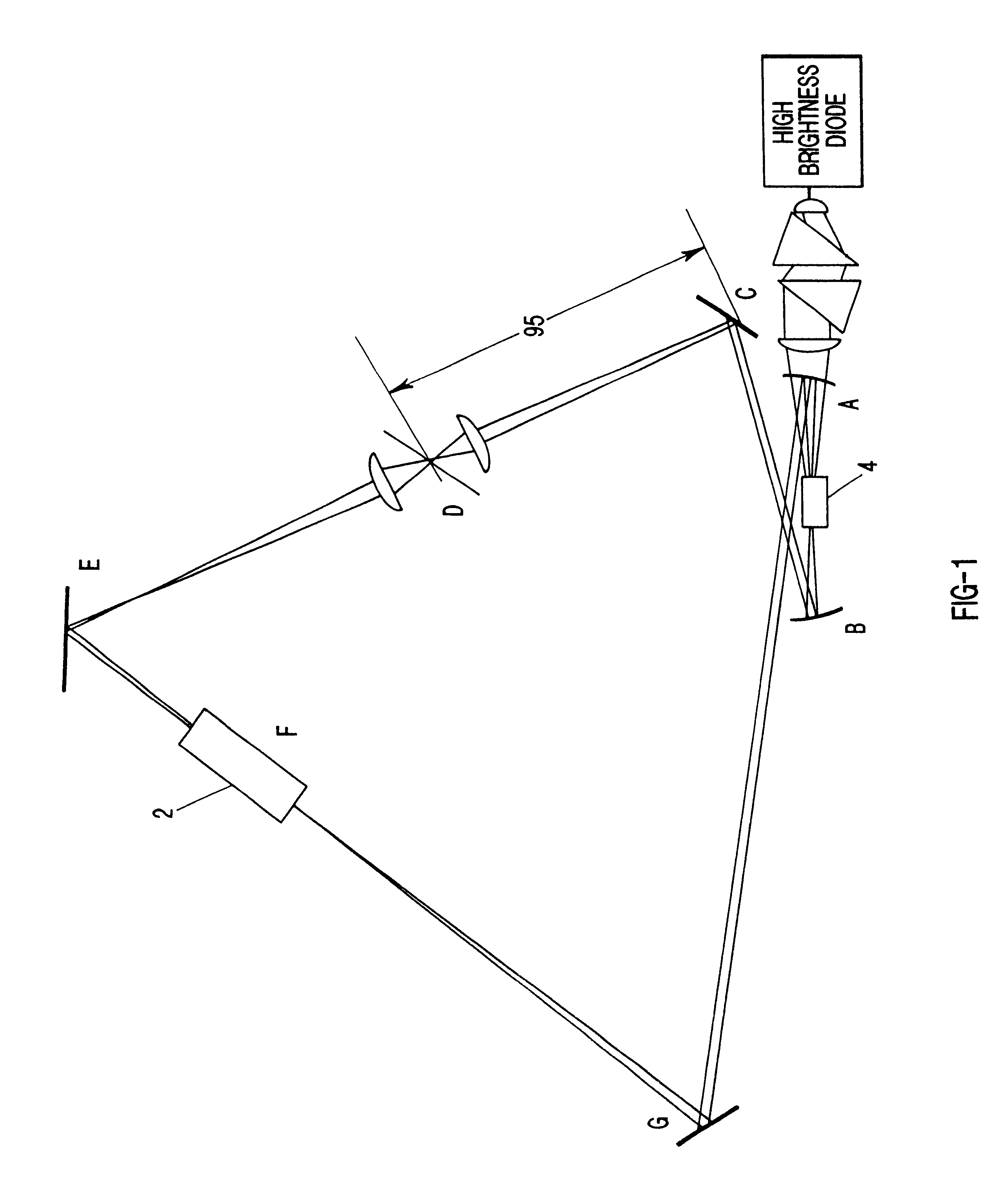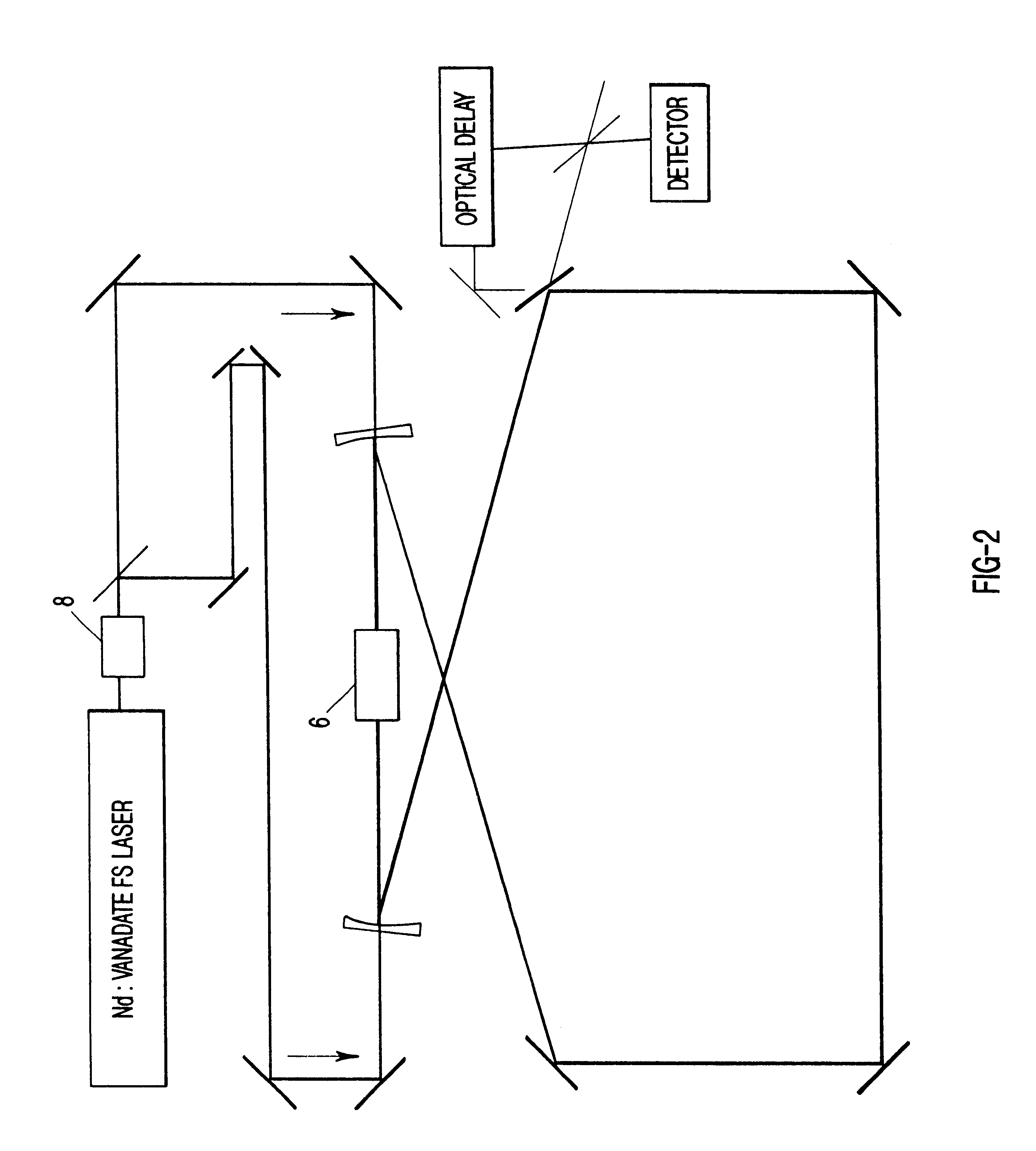Bi-directional short pulse ring laser
a laser and short pulse technology, applied in the direction of laser details, optical resonator shape and construction, electrical equipment, etc., can solve the problems of linearity, gyro becomes more cumbersome, and linear response is still not guaranteed
- Summary
- Abstract
- Description
- Claims
- Application Information
AI Technical Summary
Benefits of technology
Problems solved by technology
Method used
Image
Examples
Embodiment Construction
)
1. Solid State Laser Gyro with Nonlinear Crystal
In the first embodiment of the present invention, a short pulse ring laser gyro is implemented, in which the mechanism for making short pulses is nonlinear-interaction of the counter-propagating beams in a nonlinear crystal. The nonlinear crystal is located in a beam waist of the cavity, or in the proximity of a beam waist. The short pulses are generated through a self-lensing effect in the nonlinear crystal. Because of the intensity dependence of the index of refraction in these crystals, a Gaussian shaped beam profile induces a lens in the nonlinear medium. The effect of this lens is to increase or decrease the beam diameter at some other part of the cavity. By inserting an aperture at some location of the cavity where the beam diameter decreases with intensity, short pulse operation is favored, since the losses decrease with intensity. This effect is enhanced if two pulses cross in the crystal. Therefore, the crystal becomes the me...
PUM
 Login to View More
Login to View More Abstract
Description
Claims
Application Information
 Login to View More
Login to View More - R&D
- Intellectual Property
- Life Sciences
- Materials
- Tech Scout
- Unparalleled Data Quality
- Higher Quality Content
- 60% Fewer Hallucinations
Browse by: Latest US Patents, China's latest patents, Technical Efficacy Thesaurus, Application Domain, Technology Topic, Popular Technical Reports.
© 2025 PatSnap. All rights reserved.Legal|Privacy policy|Modern Slavery Act Transparency Statement|Sitemap|About US| Contact US: help@patsnap.com



